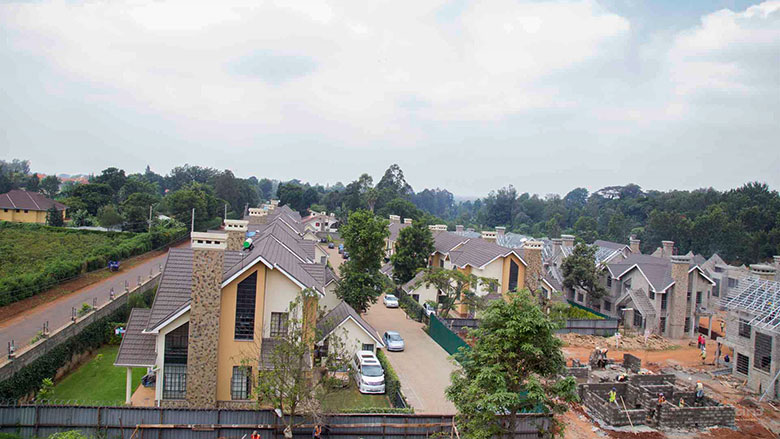NAIROBI, APRIL 11, 2018 – The proportion of Kenyans living on less than the international poverty line (US$1.90 per day in 2011 PPP) has declined from 46.8% in 2005/06 to 36.1% in 2015/16, according to the 17th edition of the Kenya Economic Update.
The economic update, Policy Options to Advance the Big 4: Unleashing Kenya’s Private Sector to Drive Inclusive Growth and Accelerate Poverty Reduction, notes that current monetary and non-monetary poverty indicators in Kenya are better compared to most Sub-Saharan African (SSA) countries, but continue to lag other lower middle-income countries. Overall, given Kenya’s income levels and poverty rate, human development indicators are relatively high, illustrating that Kenya performs better on non-monetary dimensions of poverty, the update says.
The update also points out that the agricultural sector was a key driver of poverty reduction in the past decade. However, this also implies progress in poverty reduction remains vulnerability to agro-climatic shocks such as droughts that can force households back into poverty. To avoid recurrent seasonal spells of poverty experienced by agricultural households, the report recommends that the country build resilience, including climate-proofing its agriculture.
Assessing Poverty Reduction in Kenya
Kenya has registered growth domestic product (GDP) growth rates above 5% for most of the past decade. However, the KEU notes that the transmission of that growth into increased consumption at household level remains low, or GDP growth would have translated into even higher poverty reduction.
“At the current pace of poverty reduction, about one percentage point per year, Kenya cannot eradicate poverty by 2030,” says Utz Pape, World Bank poverty economist and lead author of the update’s special section on poverty. “Accelerating the pace of poverty reduction in Kenya will require higher and more inclusive growth rates coupled with a sharper focus on poverty reduction policies.”
The KEU also notes that the profile of poverty in Kenya has a significant spatial dimension that is omitted in the international comparison. For example, Most of Kenya’s poor live in rural areas predominantly in the northeastern parts of the country. This spatial dimension persists, and possibly exacerbated inequality across regions in Kenya. Scaling up and geographic targeting of anti-poverty and social protection programs are important instruments to target the neediest households and reduce regional disparities, according to the economic update.
Kenyans enjoy improved access to sanitation while access to improved water remains low, according to the update. For example, while almost 72% of Kenyan households have access to improved water sources—above the 68% average in the SSA—this is below the current access levels observed in peer countries such as Ghana, Rwanda and Uganda. However, Kenya performs better in access to improved sanitation when compared to countries with similar international poverty headcount rates.
According to the report, Kenya’s literacy rate is amongst the highest in SSA, and it has increased further by 11% since 2005, reflecting the massive progress made in Kenya’s educational system over the past decade. In 2015, 84% of the population above 14 years could read and write compared to Ghana at 71%.
The report says that today, more than half of Kenyan adults above 24 years (almost 58%) have completed primary education, a notable increase from an estimated 44% in 2005. However, the report also highlights that while just over 14% of adults aged 25 and older have completed secondary school, up from 3% in 2005, this falls below other countries with comparable poverty rates. That notwithstanding, net school enrollment ratios have improved in the last decade with a primary school enrollment ratio of about 87%, but secondary school completion presents a significant barrier.
Kenya has also made significant gains in reducing child stunting and has one of the lowest stunting rates in international comparison, according to the KEU. As of 2015, nearly one out of five (about 19%) of children under five years old were stunted in Kenya, compared to one in three in 2005. Kenya has the lowest stunting rate in Eastern Africa, but the rate is still higher compared to other SSA countries, such as Ghana.
“The forthcoming World Bank Kenya Poverty and Gender Assessment (KPGA) will provide a more detailed analysis combined with policy recommendation for poverty reduction,” said Pierella Paci, World Bank practice manager for poverty and equity covering East and Central Africa.
Using the Kenya Integrated Household Budget Survey (KIHBS 2015/16) data, the KPGA will provide a more detailed analysis of poverty characteristics and trends in Kenya, incorporating both a sectoral and a spatial lens. The KPGA will also zoom into the gender aspects of poverty, contrast poverty profiles in urban and rural areas, and examine poverty through education, health and social protection lenses. The objective of the KPGA is to foster an evidence-based debate about policy options to accelerate poverty reduction in Kenya.

